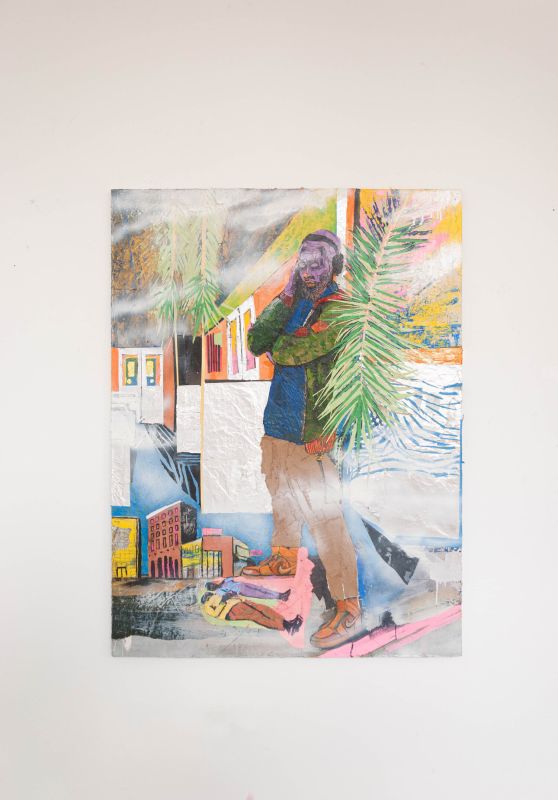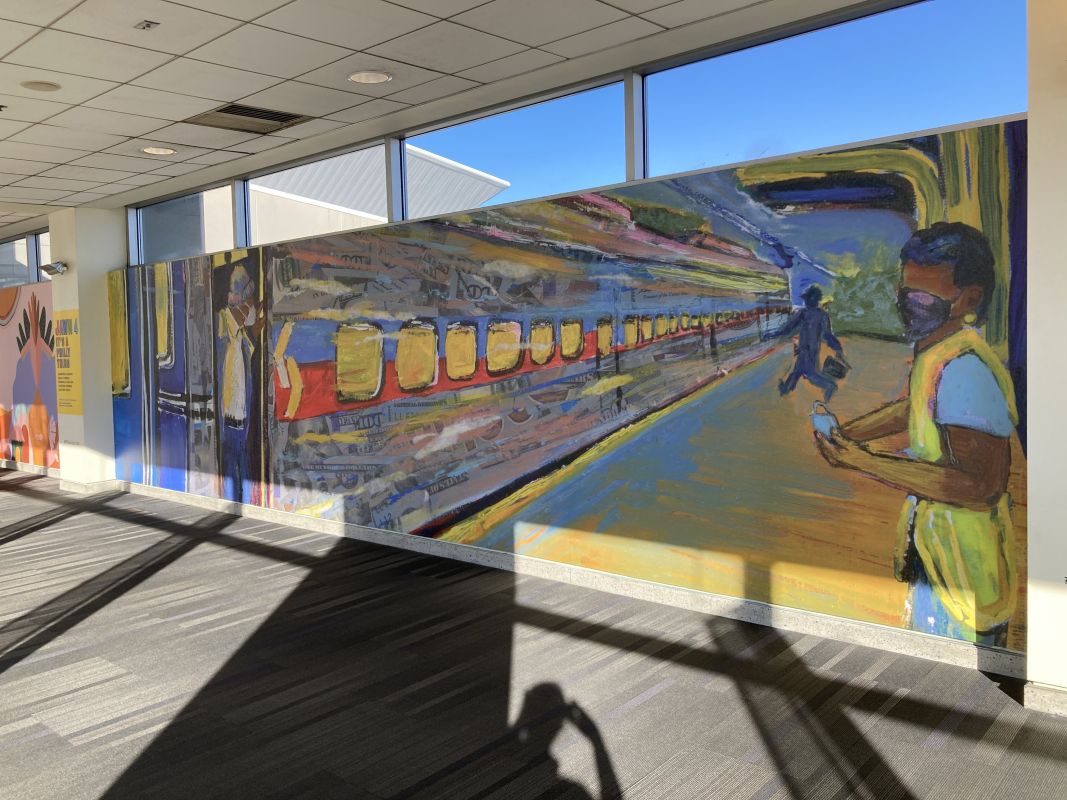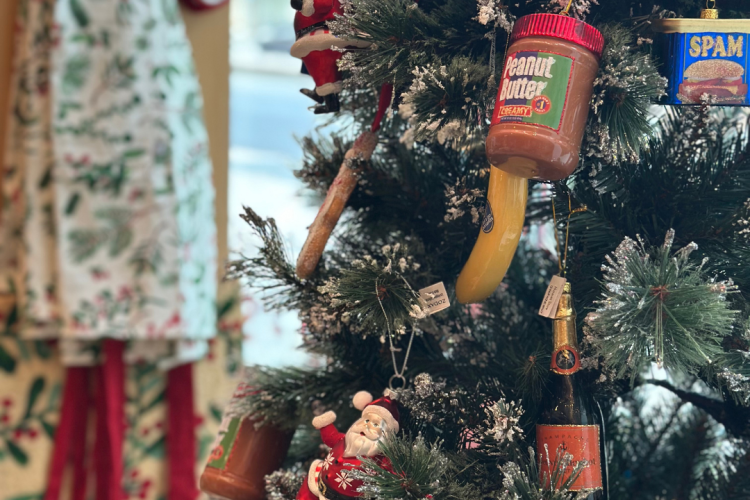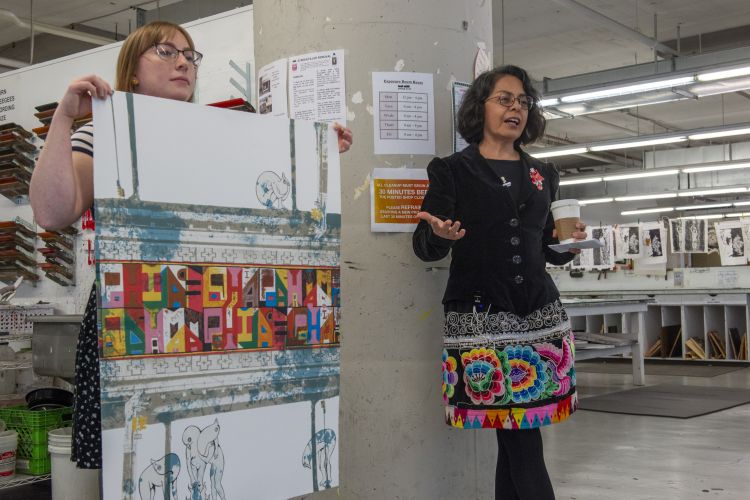STORIES FROM PAFA
Travel Scholarship Fueled Transformation for Eustace Mamba
Originally from Manhattan, N.Y., Eustace Mamba entered PAFA in 2016. He received a BFA in illustration and is currently pursuing his MFA. Among other prizes, Mamba has received the 2019–2020 Raymond D. & Estelle Rubens Travel Scholarship. His “Weighing Escape Options” was acquired through the Judith McGregor Caldwell Purchase Prize at the 2020 Annual Student Exhibition and he holds Mural Arts’ Philadelphia Fellowship for Black Artists.
What does it mean to you to be in PAFA’s permanent collection?
It means a lot to me to know that my artworks will outlive me in a museum collection. I would like the messages within my artwork to reach as many people as possible. I know that being part of a museum collection will grant more people access to my work than if it were to reside in someone’s private residence.
Your art has been described as exploring “the line between history, post-colonialism, and identity.” Talk a little about this identity.
Being Black in America is an inherently political act. My artwork, as a result, will always straddle the history that comes with having skin that is this color.
You share this quote from Dr. Cornel West prominently on your website: “The culture of mass distraction generates indifference towards the things that really matter.” What does this mean to you?
I am going through a love-hate relationship with social media and the internet. The internet has brought so many new ideas, progress, and changes, but it is also distracting us from the things that really matter: the tangible things in front of us or the people that exist in real life.
Last year, during the pandemic and the catalysts that lead to the #BlackLivesMatter movement, many aspects of my life changed quickly. I was able to use the internet to amplify the messages within my art, and also a tool to really help make change in my immediate community. But now a year later, I have withdrawn in many ways. I feel like many of us who have grown up with the internet and social media have all withdrawn— we are getting older and we are exhausted.
Artists in particular feel a certain obligation to be online. We feel like Instagram and Facebook are the only ways we can get exposure and sell our art. This is a myth, but before I came to art school that was my perspective, and unfortunately after art school it still feels somewhat the same.
Which artists inspire you and how did you find them?
I have been learning not to give up too many of my secrets; I have been a little too open in the past about my references and influence. But I will say that recently I have been learning more about American Folk art and early African American artists. I have a particular focus on sculptors and painters.
I like finding similarities between my ideas of ‘something beautiful’ and artists who came before me. It’s a great thought that an artist in a museum had taste that lives up to your personal standard! And it has motivated me to be more free in my studio practice, when I see past artists negotiating the same issues on the canvas that I have.
Tell us more about your studio practice in the past. What are some issues you’ve worked out ‘on the canvas’?
When I was younger, I had a terrible habit of covering up paintings. It horrified my friends and family that I destroyed so many paintings and concepts—hundreds. I’m sure if my paintings ever got an x-ray in the future, it would be fascinating.
My habit of covering up was really only a reflection of my search for acceptance. I felt like my art didn’t fit in when I was younger. When I visited art museums for the first time, as a high school student, I didn’t see artwork that looked like it could come from a hand similar to mine. It was only after years of self-exploration, self-education, and exposure that I discovered that my early artworks and ideas did have community.
How do you research the past in preparation for your art?
I have always loved history and excelled at history as a child. I read, watch, and listen to quite a few scientific resources. I also have a collection of books of ancient African art that I use as a starting point for most of my research into different regions, artistic traditions, and tribes.
Where did you travel using the Raymond D. & Estelle Rubens Travel Scholarship and what effect did it have on you and your art?
London was a transformative experience. It was an opportunity to expose myself for the first time to a side of the classical fine art world that I have been learning about at PAFA. Research into the Windrush Generation was initially my intent for my travels overseas, but I became more obsessed with absorbing as much information as possible. The travel scholarship gave me the opportunity to finally see many of the Great Masters’ work for the first time: analyze their brush strokes and the real layers of paint. Seeing these paintings transformed my understanding of the image in subtle, yet profound ways and set a new trajectory for what I wanted to accomplish in the studio.
What is your next dream destination for research or inspiration?
I think Lagos, Nigeria is top of my list right now. I have learned, through DNA testing, that I have lineage in Nigeria. I want to learn more about my African heritage, being that my family is only from the Caribbean.
I want to learn more about traditional Nigerian culture and their artwork. The artwork of the Yoruba and the Benin bronzes are where I would like to start. But I am also trying to learn as much as possible about contemporary African/Nigerian art and visit the ART X Lagos fair.
What are you working on through Mural Arts’ Philadelphia Fellowship for Black Artists?
The fellowship connected me with the team in charge of art at the Philadelphia International airport. It was because of the fellowship that I was able to create my first mural, which is currently on display at the airport in Terminal E-F. More recently I have been talking with Conrad Benner of @StreetsDept about some projects he has in the works over the next few months. Streets Dept is a Philly-based, community-focused project by Conrad, documenting and celebrating street art, important community issues, and muralism across Philly.
What makes PAFA different from other schools?
There isn't a single artist I know that hasn’t left PAFA changed in some type of way. The school promises a transformative experience for the true art enthusiast. This is where the passion for learning about art started in this country.
Multimedia
A temporary installation created by Mamba in 2021, “Stuck in the Web” is a kind of self portrait inspired by Black Mamba snakes caught in spider webs and the obligation and shifting nature of a digital presence.

Mixed Media on Canvas
Collection: Museum at Pennsylvania Academy of the Fine Arts
“Weighing Escape Options” was acquired through the Judith McGregor Caldwell Purchase Prize at the 2020 Annual Student Exhibition.

We're so excited you're planning to visit PAFA!
Make time for art — visit us Thursday to Sunday.
Before reserving your tickets, please review helpful information about museum hours, accessibility, building access, and special admission programs.
If you have any questions, feel free to reach out to us at visitorservices@pafa.org — we’d love to help!



